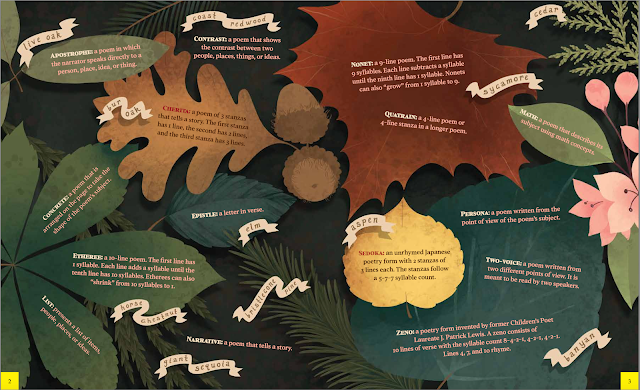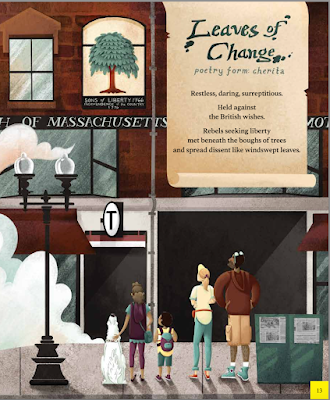Just in time for Poetry Month, my new poetry collection, Leafy Landmarks: Travels with Trees has hit the road!
Leafy Landmarks is a road trip through poems across the United States to visit 14 historic tree sites, some famous and others less well known.
From the Emancipation Oak in Hampton, Virginia, to the nearly five-thousand-year-old Methuselah tree in Schulman Grove, California, readers will discover trees that have traveled to the moon, witnessed the founding of our country, and inspired hope during troubled times.
Each poem in Leafy Landmarks follows a specific poetry form, from apostrophe to zeno. These forms are defined in the book’s end pages.
The poetry forms in the book provide great models for students to write their own poems. In the Educators' Guide I provide templates to support students in creating their own poems in particular forms. Here are some examples:
A cherita is a poem of three stanzas that tells a story. The first stanza has one line, the second stanza has two lines, and the third stanza has three lines. (I talk more about why I love sharing cherita's in the classroom in this post.) Using the CHERITA TEMPLATE in the Educators' Guide, students can write their own cheritas. For a great cross-cirricular connect, have students write cheritas about a topic they are learning about in social studies!
The poem “One Tree Forest” is an etheree that describes how the Pando aspen grove formed. This vast grove in Utah looks like thousands of individual trees, but it is actually one organism. Below ground,
a single root system spreads and sends up new trunks.
Perhaps you'd like to challenge your students to write two-voice poems. (Two voice poems are my favorite type of poem to write and teach! I explain why in this post.) The Leafy Landmarks Educators' Guide has a TWO-VOICE TEMPLATE to go along with the two-voice poem "Resourceful Roots" about Thomas Edison and his banyan tree. Or have your students write epistle poems, poems in letter format, using the mentor poem “Advice from an Ancient,” where an old bristlecone pine writes a letter to a newly sprouted tree. So many possibilities packed into one book.
The mentor poems in Leafy Landmarks will help your students branch out and try new poetry forms all poetry month long!




Oh, this looks great! Thanks for this post!
ReplyDeleteAnd congratulations!!
ReplyDelete